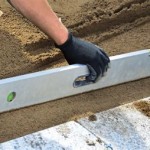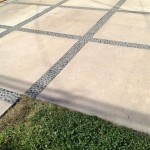How To Keep Mosquitoes Off Your Patio
Enjoying a patio space can be significantly hampered by the persistent presence of mosquitoes. These insects are not only irritating but also vectors for various diseases, making mosquito control a crucial aspect of outdoor living during warmer months. Effective mosquito management requires a multi-faceted approach, incorporating preventative measures, environmental modifications, and, if necessary, targeted treatments. This article will explore several strategies to minimize mosquito activity and create a more pleasant patio environment.
Eliminating Breeding Grounds
The most fundamental step in mosquito control is the elimination of breeding grounds. Mosquitoes require standing water to reproduce, and even small amounts of water can support larval development. A thorough inspection of the area is essential to identify and address potential breeding sites. Regularly emptying containers that collect water, such as flower pots, bird baths, and children's toys, is crucial.
Gutters should be cleaned regularly to ensure proper drainage and prevent the accumulation of stagnant water. Tarps, particularly those used to cover outdoor furniture or equipment, can also collect rainwater and become breeding sites. These should be properly secured or removed when not in use to prevent water accumulation. Even depressions in the ground can hold water long enough for mosquitoes to breed. Filling these areas with soil or gravel can eliminate these potential habitats.
Consider the presence of larger bodies of water, such as ponds or pools. While these features cannot be easily eliminated, they can be managed to reduce mosquito breeding. Introducing mosquito-eating fish, such as Gambusia affinis (mosquito fish), can be an effective biological control method. Regularly skimming the surface of pools to remove debris and ensuring proper chlorination will also help prevent mosquito larvae from thriving. For ponds without fish, consider using Bacillus thuringiensis israelensis (Bti) products. Bti is a naturally occurring bacterium that is toxic to mosquito larvae but harmless to other organisms, including humans, pets, and beneficial insects.
Another often-overlooked source of mosquito breeding is neglected drainage systems. Inspect drainage pipes and ensure they are clear of obstructions. Standing water in drainage ditches can become a haven for mosquito larvae. Implementing proper drainage solutions and regularly clearing any debris from these areas will contribute significantly to mosquito control.
Creating an Unfavorable Environment
Beyond eliminating breeding grounds, altering the environment around the patio can further deter mosquitoes. Mosquitoes are weak fliers and prefer sheltered areas with minimal wind. Increasing air circulation can make the patio less attractive to them. Consider using fans to create a breeze; this disrupts their flight patterns and makes it more difficult for them to land and bite. Multiple fans strategically placed around the patio will provide the most effective coverage.
Mosquitoes are also attracted to dark, humid environments. Trimming vegetation around the patio and allowing more sunlight to penetrate will reduce humidity and make the area less appealing. Pruning shrubs and trees will improve air circulation and reduce the number of hiding places for mosquitoes during the day. Removing leaf litter and other organic debris will also help reduce humidity and eliminate potential harborage sites.
Specific plant species can act as natural mosquito repellents. Planting citronella grass, lavender, rosemary, and marigolds around the patio can help deter mosquitoes. These plants contain compounds that mosquitoes find offensive. While the effectiveness of these plants may vary depending on the specific variety and environmental conditions, they can contribute to an overall strategy of creating a less hospitable environment for mosquitoes. Crushing the leaves of these plants can release more of the repellent compounds, but be mindful of potential skin sensitivities.
Consider the lighting around the patio. Mosquitoes are attracted to light, particularly ultraviolet (UV) light. Using yellow or sodium vapor lights instead of traditional incandescent or fluorescent lights can reduce mosquito attraction. LED lights with a warm color temperature are also less attractive to mosquitoes. Minimizing the overall amount of outdoor lighting can further reduce mosquito activity.
Employing Repellents and Traps
While environmental modifications can significantly reduce mosquito activity, repellents and traps can provide additional protection. Several types of repellents are available, each with varying degrees of effectiveness and safety. DEET (N,N-diethyl-meta-toluamide) is a widely used and effective repellent, but some individuals may prefer to avoid it due to concerns about potential health effects. Picaridin is another effective repellent that is generally considered to be safer than DEET. Oil of lemon eucalyptus (OLE) is a natural repellent that has also been shown to be effective, although its duration of protection may be shorter than that of DEET or picaridin.
When using repellents, it's crucial to follow the manufacturer's instructions carefully. Apply the repellent evenly to exposed skin, avoiding contact with eyes and mouth. Reapply as needed, especially after sweating or swimming. For children, use repellents with lower concentrations of active ingredients and avoid applying them to their hands, as they may put their hands in their mouths.
Mosquito traps can also be used to reduce mosquito populations. Several types of traps are available, including propane-powered traps that emit carbon dioxide to attract mosquitoes, and electric traps that use UV light to lure and electrocute them. The effectiveness of these traps can vary depending on the specific model and environmental conditions. Placement of the trap is critical; it should be located away from areas where people congregate and in a sheltered location away from strong winds.
Another type of trap, known as a mosquito larvae trap, targets mosquito larvae before they mature into adults. These traps typically consist of a dark container filled with water and a lure that attracts female mosquitoes to lay their eggs. The larvae hatch in the trap but are unable to escape and eventually die. These traps can be a valuable addition to an overall mosquito control strategy, particularly when used in conjunction with other methods to eliminate breeding grounds.
Personal protection devices, such as mosquito nets and wearable repellents, can also provide an extra layer of protection. Mosquito nets can be used to cover outdoor seating areas or even individual chairs. Wearable repellents, such as wristbands impregnated with repellent compounds, can provide localized protection, although their effectiveness may be limited compared to topical repellents.
Ultimately, a combination of strategies is most effective for keeping mosquitoes off your patio. By eliminating breeding grounds, creating an unfavorable environment, and employing repellents and traps, you can significantly reduce mosquito activity and enjoy your outdoor space more comfortably. Regular maintenance and vigilance are essential to maintain effective mosquito control throughout the mosquito season.

How To Keep Bugs Off Your Patio Turf Factory

How To Keep Mosquitoes Away From Your Patio Brock 360

Effective Tips To Keep Mosquitoes Off Your Patio Shoe Makes New

Keep Mosquitoes Away From Your Outdoor Parties Foremost Insurance Group

5 Tips To Keep Bugs Away From Your Patio Outdoormarketplace

Best Materials To Burn In Your Fire Pit Repel Mosquitoes Walden Backyards

Top Five Ways To Keep Mosquitoes Off Your Deck Or Porch Hawx Pest Control

How To Prevent Mosquitoes In Your Outdoor Space
How To Keep Bugs Away From Patios Backyard Bug Control

Patio Shield Mosquito Repeller Thermacell








